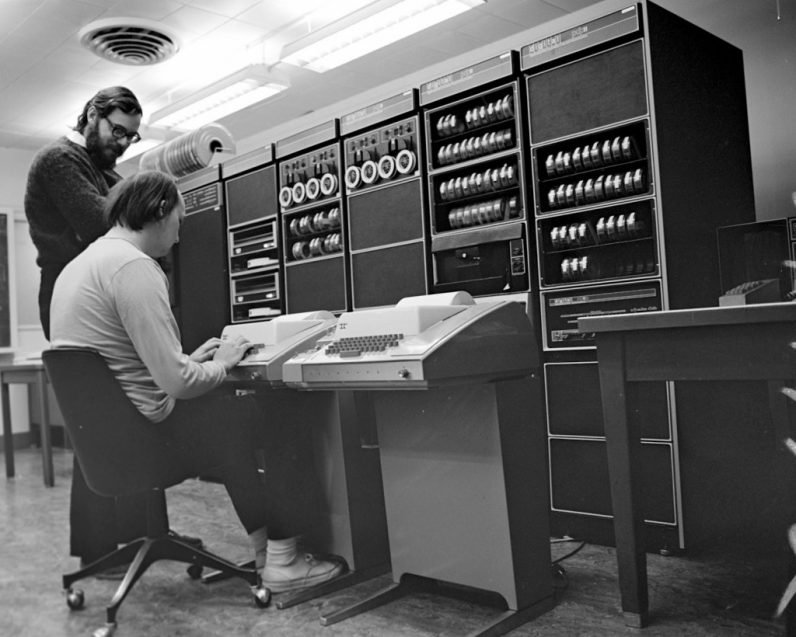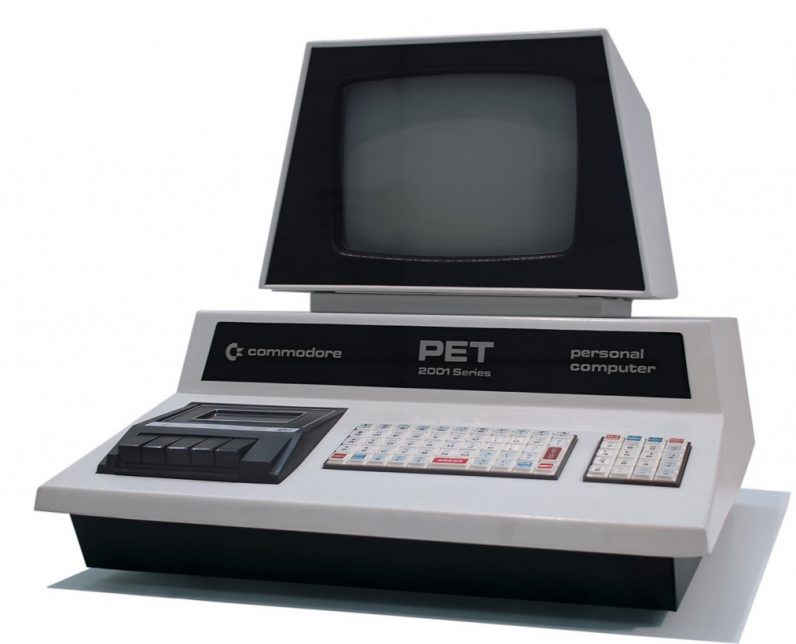
The most visionary programmers today dream of what a robot could do, just like their counterparts in 1976 dreamed of what personal computers could do.
In 1976, if you had a creative idea for software or dreamed of writing your own computer programs to earn money, you were screwed.

At that time, there were only three choices for the independent programmer:
- Beg your corporation, school, or bank to allow you to program the mainframe for your pet project.
- Program a limited-use processor like a calculator.
- Build your own computer.
i.e., screwed.
Then in 1977 something miraculous emerged: The “Trinity”. The Apple II, the Commodore PET 2001, and the Tandy TRS-80 (affectionately known as the Trash 80) all were released, as if out of nowhere. And all of a sudden, developers who had been quietly dreaming of what computers could do for their jobs, their personal business, and their incomes were in seventh heaven.
For the first 3 or 4 years, pretty much the only buyers of these three computers were programmers because these limited machines just didn’t DO anything that a consumer might want. Yet they unleashed the untapped creative dreams of thousands of ordinary women and men, who in turn enticed the rest of us onboard.

Commodore PET 2001 Series Personal Computer (1977); Photo: Tomislav Medak from Flickr / Editing: Bill Bertram (Pixel8)
The Trinity came out with a very simple — and powerful — value proposition for programmers. These computers were:
- Complete. These were the first personal computers that were sold as fully integrated solutions — the monitorless Apple II being the least so, though most people just hooked it up to their televisions. All featured expansion ports, keyboards, and cassette tape recorders for storage. The TRS-80 even came with a disk drive. This was a huge contrast to the build-it-yourself “Homebrew” systems that preceded them.
- Affordable. The TRS-80 and PET both had configurations available for well under $1000. The Apple II, with groundbreaking color support, was a bit over $1000, but you can see where that concern with visual details got them.
- Super easy to program. All at one point licensed Microsoft BASIC, which is how that company got its effective start.
- General-use and flexible, like “real” (mainframe) computers. These were not calculators or adding machines or Pong consoles. These were general-purpose computers that you could use to program whatever you wanted.
True, they didn’t have vector graphics or much memory, but to have your own computer (that you could take with you in your car!) that did actual computing— it was truly a miracle.
Suddenly, tens of thousands of inventors unleashed their creative ambitions upon the world. In a relatively short time, these men, women, and kids invented all of the modern uses we know and love for personal computers — games, word processors, art tools, spreadsheets, and databases.
Computers went from being strictly industrial to affordable and easy to program, and they were bought by programmers of every stripe:
- Enterprise programmers bought personal computers because they were restricted from using the mainframe at work to “tinker” or “experiment”, so they bought them in droves to conduct their own R&D.
- For the first time, true entrepreneurial programmers emerged, ready to solve thousands of industry problems by creating and selling software, as well as by providing bundles that packaged software and hardware together as a complete business solution.
- Adult and teenage hobbyists bought personal computers not just to be creative, but also because they knew without a shadow of a doubt that computing was coming and that it would change both their personal and their working lives.
I should know… I was one of those STEM teens in the earliest days of personal computers whose parents invested in a Commodore. And that single investment by my parents opened up a world of opportunity for me.
Here’s the thing. When you substitute “robot” for “computer”, this sounds exactly like the world of 2018, not 1976. But what’s a developer to do today who believes in robots as the next world-changing software platform and is ready to take advantage of it?
They’re screwed.
Today’s web, mobile, enterprise, or STEM teen developer who dreams of what robots can do has only cumbersome, limited, or very expensive options.
- Once again, there are the mainframes — industrial robots that are off limits. The most recent (2017) International Federation of Robotics white paper on industrial robots noted that in 2016, robot sales increased by 16 percent (PDF), a new peak for the fourth year in a row.
- And lots of single- or limited-purpose devices. Sphero’s SPRK+ and Anki’s Cozmo are both easy to program and quite affordable. They’re just not flexible enough to truly allow for an explosion of creative robot programming, even though they’re a step on the right path.
- There are the DIY robot kits, just like the pre-Trinity “Homebrew” computer kits of ’76. A cursory web search will bring up hundreds of kits for complete robots of every sort. But while kits are great for makers, they can be pretty frustrating for developers, when what you want to do is program the robot, not build it. And kit components (sensors, chip sets, cameras, etc.) are not usually high-end enough to get to the robot equivalent of “nearly a mainframe”.
- And, you can see an explosion in precursor activities for STEM teens — robot clubs, classes, competitions.
Still, there’s no Trinity… yet. Because as sure as I’m sitting here, these robots are being developed in China, in Israel, and in the United States. We’re at the cusp of the emergence of actual general-purpose, easy to program, consumer-priced robots that do almost everything (sadly, hands/grippers are still ridiculously expensive).
But there are doubters. Critics of the idea of multipurpose programmable robots fall into two categories:
- “What does it do? It needs a killer app.” These people don’t realize that if Steve Jobs knew spreadsheets were going to increase his sales 100x he immediately would have focused the whole company on building spreadsheets. But you can’t legislate or mandate invention — and it’s probably just as well. Invention happens from the spark of one dreamer. Sure, a single company like Apple might strike lightning and have the spreadsheet aha moment. But it’s not likely.
- “What about hands? A robot without hands can’t do anything useful.” That’s essentially what conventional wisdom said in 1977, too — “it [the computer] is too underpowered” and “it doesn’t have graphics” and “it’s not connected to anything else” and “we can’t store large data sets on it”. That’s the mainstream market speaking — not the innovator’s market that begets disruptive breakthroughs. I’m confident that autonomous mobility, agency, seeing, speaking, and hearing are plenty enough capabilities for many programmers to exceed our wildest imaginations with uses we’ve never dreamed of.
Once these developers are empowered with a robot that’s general purpose, affordable, and easily programmable they will shock the world. They’ll invent tens, hundreds, thousands, and eventually millions of uses for robots in the office and the home. Then, finally, we’ll reach 1981 again (circa 2022), when the modern equivalent of IBM enters the personal robot market and “validates” an ecosystem that will already be thriving with millions of robots performing a vast array of useful and creative skills.
And those early robot developers will tell their grandchildren “look at how I changed the world.” Just like their micro and mainframe compatriots do now.
Get the TNW newsletter
Get the most important tech news in your inbox each week.




